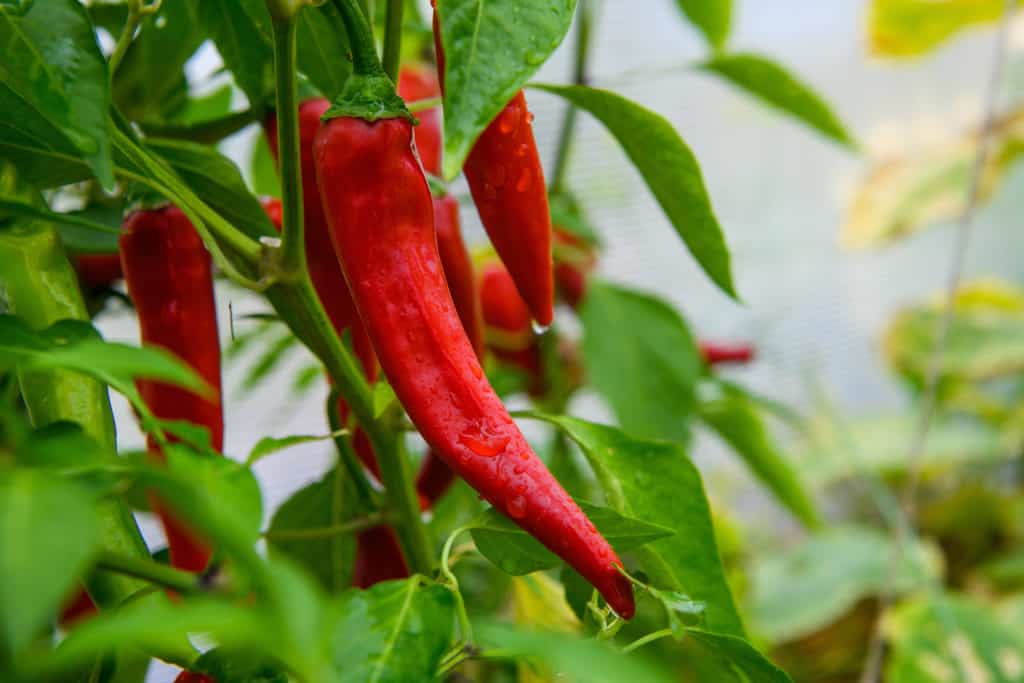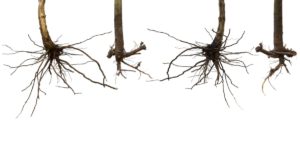Do you want to know how to make peppers grow faster? If so, you have come to the right place! In this blog post, we will discuss some of the best ways to help your peppers grow as quickly as possible.
To achieve fast germination, keep pepper seeds between 80 and 90 degrees Fahrenheit. The majority of pepper seeds germinate in 8-20 days, be patient and keep them warm at all times. To boost your peppers’ growth, you can improve your soil, pruning methods, temperature, lighting, as well as watering.
We will also provide you with some helpful tips on how to keep them healthy and thriving. So, whether you are a beginner or an experienced gardener, read on for all the information you need to know about successfully growing peppers!
How to make peppers grow faster
| Temperatures | 65 F indoors, 65 to 80 F outdoors |
| Planting Depth | 3 to 4 inches |
| Spacing | 12 to 24 inches between the plants |
| Lighting | 8+ hours |
| pH Level | 5.5 and 7.0 |
There are a few advantages to making your pepper grow faster. For starters, you’ll get to enjoy the fruit of your labor sooner.
Growing peppers faster will allow you to get a head start on the next season’s crop.
By following these simple steps, you can ensure that your peppers will be big and healthy in no time!
Right germination

Keep the seeds at a constant 80-90 degrees Fahrenheit for germination. This is the ideal environment for quick and successful germination.
The majority of pepper seeds germinate in 7-21 days, but some may take longer; so just maintain them warm. Heat mats designed for seedlings can assist immensely!
Because some pepper seeds, especially those of extremely hot peppers, take considerably longer to germinate, starting them earlier than other crops is advantageous.
Peppers should not be planted outside until the nights are consistently above 60-70 degrees Fahrenheit. Peppers will be restricted in growth until the temperature has sufficiently risen.
Seasonal extenders such as cold frames, hoop houses, water-walls, or greenhouses can also be used to plant them earlier.
Temperature controlling

An important approach to promote pepper growth is by exposing them to a lot of heat. The ideal daily temperature for optimum pepper growth is between 70°F and 85°F.
If you want to produce peppers outdoors, either in pots or in the garden, make sure the temperature is right before putting them outside.
If the peppers are grown indoors or in a greenhouse, the ambient temperature is usually too low, so additional heat will really help your plants develop.
Greenhouses are a great way to increase the temperature of your pepper plants significantly. Some claim that peppers grown in a greenhouse will develop quicker and will get larger, compared to those cultivated outside.
Producing peppers in a greenhouse environment does not necessitate a beautiful glass greenhouse.
While this is the high-end solution, you may also grow your peppers in a cold frame or underneath a simple hoop house.
Proper lighting

As important as the right temperature is providing adequate lighting for your pepper plants. Pepper plants require at least 8 sun-hours each day, while more hours are always preferable.
Place your pot or plant your pepper in a location that receives plenty of sunlight throughout the day. If possible, try to keep them under direct sunshine for the entire day.
Sunscald can scorch the fruits during an exceptionally hot late summer and the fruits may fall. If this is a concern, building up foliage by intelligently pruning them may help.
Pepper plants, with a lack of light, may benefit from the use of grow lights.
Grow lights are used to supplement or replace the natural sunlight in an indoor environment or a greenhouse.
This can be useful for plants that need more light than what is available.
Pepper plants need a lot of light to produce fruit, and many spaces do not have enough natural light to support pepper growth.
By using grow lights, you can provide the pepper plants with the light they need to produce fruit.
Right watering schedule

Pepper plants require just the right amount of water to thrive. If there isn’t enough water, nutrients will be insufficient and the peppers will grow slower.
Peppers can withstand droughts but won’t develop properly.
If the soil is always slightly too wet, the root system will become weak because it does not have to work to locate water.
When a drought hits, the plant’s performance deteriorates dramatically. Waterlogged soils on the other hand can also cause root rot which will lead to the death of the plant.
Feel the soil to ensure that your peppers are sufficiently watered. They have enough water if the soil is moist to a few inches deep.
Give them a drink if the soil is dry to this depth.
If you’re planning to grow potted pepper plants indoors or in a greenhouse, keep in mind that soil in pots dries out really quick.
Keep an eye on your potted pepper plants and make sure they get enough water.
Improving the soil

Pepper plants require a lot of nutrients to thrive. This means they must have a large number of nutrients in order to thrive and flourish.
Add a lot of organic compost to your garden bed or your container before planting your peppers, whether they are seeds or transplants. The compost will slow-feed the plant over time, allowing it to grow well.
An all-purpose organic fertilizer will do well, or you opt for a vegetable or pepper-specific fertilizer.
Make sure you provide your pepper plant with enough nitrogen.
A healthy soil’s pH level is another important aspect to consider. If the soil’s pH is incorrect, it can lead to poor growth of the plant.
You should keep your soil’s PH between 5.8 and 6.8.
Pepper plant transplantation

If the transfer from pot to garden or a bigger pot is too abrupt, pepper plants may be damaged. This can lead to a significant delay in growth.
Peppers transplanted recently can easily suffer from a so-called transplant shock. Plants undergo this type of shock because they are adjusting to their new surroundings.
To prevent transplant shock, harden off your peppers ahead of time. Try to get the plants used to the outside temperatures by putting them outside. As well water them enough and make sure they are supplied with nutrients.
Lastly, put a lot of compost under the transplanted peppers to ensure they get all they need and make sure they have enough water as the roots develop.
When transplanting your pepper seedlings or even raw seeds, you should go for a planting depth of 3 to 4 inches.
Leave around 12 to 24 inches between the pepper plants. This ensures that they have enough space, light, and nutrients to thrive fast.
You can go for a smaller space between them but this will slow down their growth.
Right pruning

A popular pepper plant pruning technique is to top the plant in order to stimulate bushier development.
This is a common practice in hot pepper growing as they take a long time to mature. If you live in a northern climate, topping often is not recommended.
Although this is a great technique to maximize your yield, it can also set the plant back too far, slowing down the growth.
Picking early flowers transfers the energy from fruit development to plant growth; while you can lose the first harvest, this will boost your plant.
If you live in a northern region, you may not have the opportunity to remove the early buds because your season may not be long enough.
Picking early peppers off

Often, small peppers start to grow on pepper plants that are not mature yet. Should you leave it and let it grow, or should you pick it off?
The answer is always, yes pick them off! The tiny pepper will steal energy from the rest of the pepper plant and slows down the growth.
It feels kind of weird to do it, but in the long run, you’ll end up with a larger plant and more peppers.
When your plant is large enough and your peppers are ripe, harvest them as soon as possible.
This encourages the plant to produce more flowers and peppers, which finally leads to higher yields.
Right variety

There are a few pepper varieties that tend to grow a little bit faster than others.
If you’re looking to get a head start on your pepper garden, or if you just want to make sure your peppers are nice and big, you have to choose the right varieties.
When looking for peppers that will mature quickly, you should choose a variety that is specifically bred for speed.
- Bell peppers 60-70 days
- Jupiter peppers 66-72 days
- Nardello peppers 65-75 days
- Cubanelle peppers 62-70 days
- Green Serrano 60-65 days
- Buena Mulata peppers 60-75 days
- Jalapeño. 65-80 days
- Tam Mild Jalapeño. 67-73 days
These varieties will typically mature in about two months, so be sure to keep an eye on them!
Suiting habitat

You can either grow peppers in a pot or just outdoor in a bed.
If you plan to grow them in a bed, remember to search for the right spot because you’re not able to move them without digging them out.
The soil should have good quality and the lighting should be good.
In case of a bad spot, try to search for a new spot or enhance the quality to get a well thriving pepper plant.
If you want to grow peppers in a container, there are a few things to keep in mind.
First, you will need a pot with holes in the bottom or drill your own holes to ensure proper drainage.
Peppers also require plenty of room for their roots, so get a pot that is at least 12 inches wide.
An immature pepper plant may appear tiny in such a large container, but it will fit into the container when it is fully grown.
Final Thoughts
There are several options to boost the growth of pepper plants throughout their development.
In the first life cycle, germination can be made faster by providing the right temperature, as well as keeping an eye on how well they are developing. If you spot any negative changes try to change the temperature.
Later on make sure to provide them with enough water, light, and nutrients so the pepper plants receive all the necessary requirements for fast growth.
As well you can make your peppers grow faster by some additional steps like the correct transplanting, the right pruning, and the suiting habit.
Lastly, I want you to remember that all the different pepper types need different times to mature. So make sure to grab the right one!



